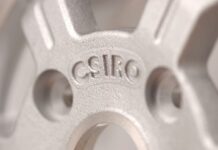
Researchers at the University of Sydney Nano Institute have unveiled a compact silicon semiconductor chip that integrates electronics with photonic components, expanding radio-frequency (RF) bandwidth capabilities and precise information control.
The technology not only expands the chip’s bandwidth, allowing more information to flow through, but also incorporates photonics for advanced filter controls, the university said in a media release.
Furthermore, the technology creates a versatile semiconductor device with potential applications in advanced radar, satellite systems, wireless networks, and the upcoming 6G and 7G telecommunications networks.
According to the research team, this breakthrough could play a crucial role in advancing sovereign manufacturing capabilities, potentially contributing to the establishment of high-tech value-add factories, particularly in strategic locations like Western Sydney’s Aerotropolis precinct.
In particular, the chip, built using silicon photonics technology, integrates diverse systems on semiconductors less than five millimetres wide.
Professor Ben Eggleton, who guides the research team, likened the process to fitting together Lego building blocks, where new materials are integrated through advanced packaging of components, using electronic ‘chiplets.’
Dr Alvaro Casas Bedoya, associate director for Photonic Integration in the School of Physics, led the chip’s design and highlighted the decade-long effort behind the unique method of integrating heterogeneous materials.
He emphasised the collaboration between overseas semiconductor foundries and local research infrastructure, underscoring the potential for Australia to develop its own sovereign chip manufacturing capabilities.
Professor Eggleton pointed out the importance of semiconductors in critical technologies and highlighted the alignment of their work with initiatives like the Semiconductor Sector Service Bureau (S3B), sponsored by the NSW Government.
This initiative aims to foster local semiconductor innovation and reduce reliance on international foundries.
The collaboration with the Australian National University resulted in an integrated circuit built at the Core Research Facility cleanroom at the University of Sydney Nanoscience Hub, a state-of-the-art $150 million facility with advanced lithography and deposition capabilities.
The photonic circuit within the chip boasts an impressive 15 gigahertz bandwidth of tunable frequencies, with a spectral resolution down to just 37 megahertz, less than a quarter of one per cent of the total bandwidth.
Professor Eggleton acknowledged the significance of the invention, attributing it to the innovative approach of integrating advanced functionalities into semiconductor chips.
“Led by our impressive PhD student Matthew Garrett, this invention is a significant advance for microwave photonics and integrated photonics research,” he stated.
He sees the potential to reshape the local semiconductor landscape, particularly through the heterogenous integration of materials like chalcogenide glass with silicon.
“Our innovative approach of integrating advanced functionalities into semiconductor chips, particularly the heterogenous integration of chalcogenide glass with silicon, holds the potential to reshape the local semiconductor landscape,” Professor Eggleton concluded.
Co-author and Senior Research Fellow Dr Moritz Merklein highlighted the potential applications in air and spaceborne RF communication payloads, suggesting possibilities for enhanced communications and sensing capabilities.
The research has been published in Nature Communications.




















